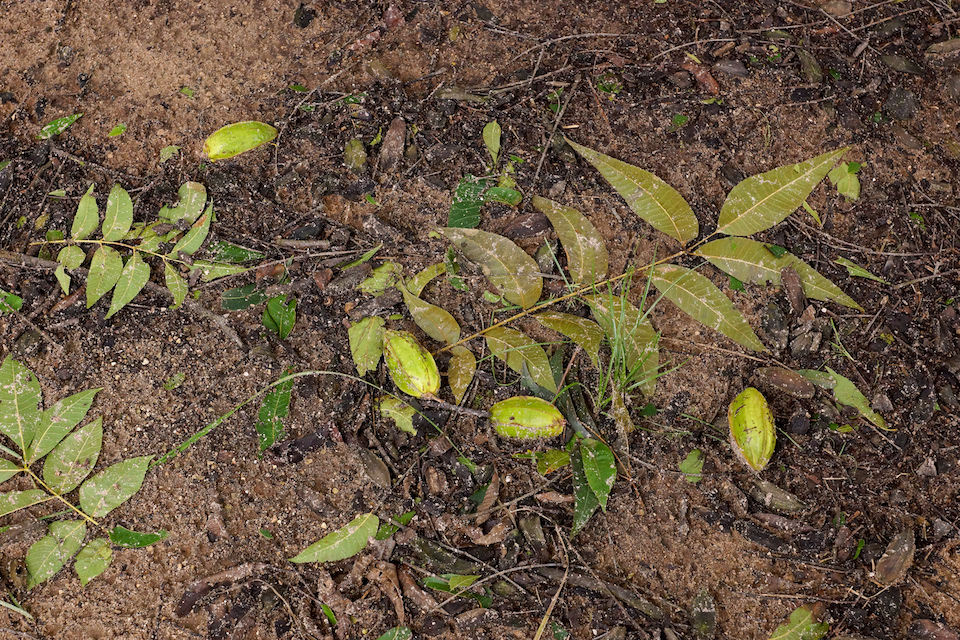Hurricane Michael Ravages Georgia, State of 2018 Crop Uncertain
Tearing through Georgia, Hurricane Michael leaves Georgia growers devastated and the crop in ruins.

Hurricane Michael scattered the 2018 crop in Georgia and tore nuts and leaves off trees.
“This is disastrous for the Georgia pecan industry,” says one Georgia grower, who on the east side of I-75 experienced the storm at a Category 1.
As predicted, this hurricane charged right through the heart of Georgia’s major pecan production region. It hit Georgia growers with sustained winds of 50 miles per hour with gusts of 90 to 100 miles per hour. It brought heavy rainfall and… Hundreds of thousands are without power at the moment, and Georgians are having a hard time making and receiving calls. Our staff was able to get in touch with a few industry members who were just getting their bearings post-Michael.
One industry member says although their house was hit with five trees, their family is safe. Without electricity and limited phone service, they are currently having a hard time getting out of the neighborhood. “I can only imagine what it looks like out in the orchards,” this industry member says.
The damage to the southeastern part of the state, where Hurricane Michael first struck, is particularly severe.
“Albany was hammered,” says on grower in that region. “We are still trying to calculate what we lost, but we lost thousands of trees. Now the problem is trying to salvage what we can without running them over, while trying to clean up the mess.”
The damage extends further into the state. A grower more northeast reports that they took significant damage. “We were about 30 to 40 miles from the eye, and we have hundreds of trees on the ground,” this grower shares.
Yet another producer on the eastern side of I-75 reports that all the leaves and nuts are off their trees.
This storm hit right at the start of harvest and many varieties had only just opened up at the end of September. The ‘Desirable’ and ‘Stuart’ crops were hit especially hard with some saying that these varieties have been “taken out.” Certain areas have as much as 100 percent of the crop on the ground, and producers report that later varieties may now become stick-tights—not open up at all. According to early reports, Hurricane Michael downed thousands of trees.
“Georgia has taken a very significant hit on its crop,” postulates one grower.
The heavy rains and winds blew nuts and leaves off trees, broke limbs and uprooted and damaged trees less than 25-years-old. Older trees are said to have withstood the storm better. Some of Michael’s victims, ‘Desirable’ trees are more susceptible to limb breakage and damage because of the variety’s brittle wood. At this time, the extent of the damage is still unclear. The USDA, National Agricultural Statistics Service estimated Georgia to produce 110 million pounds this year in its Crop Production report, released Oct. 11. Although growers expected to have some quality issues due to scab, this storm will cause a remarkable reduction to this crop. As of now, there is no way to accurately estimate what this storm will mean for the Georgia crop, price, and the pecan market as a whole.
Having prepared before the storm, Georgia growers are now focused on cleanup and, unfortunately, many know that process all too well after last year’s storm, Irma. Before starting to remove debris, producers should contact their local FSA office. Lenny Wells with the University of Georgia shared specific tips for the cleanup process on his blog and encouraged growers to contact the Georgia Pecan Growers Association if they have trouble throughout this process.
On the bright side, Hurricane Michael did not impact every Georgia grower equally. While certain areas were hit particularly hard, others appear to have made it out okay. Growers in far Southeast Georgia reported that they sustained minimal to no damage.

